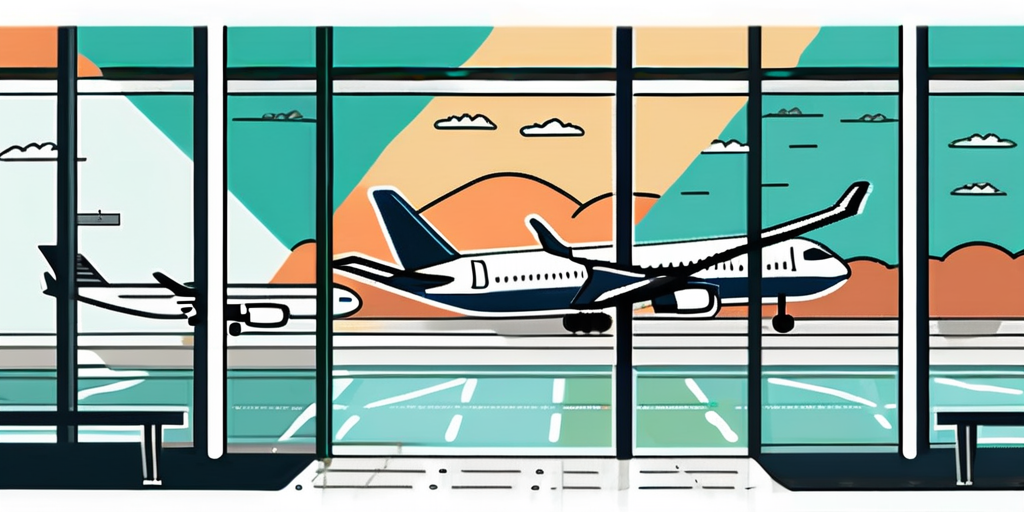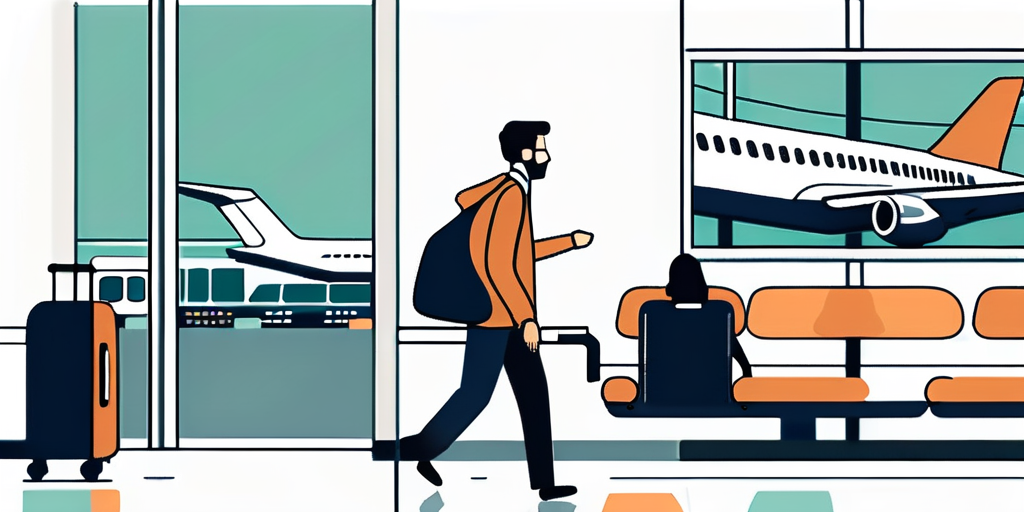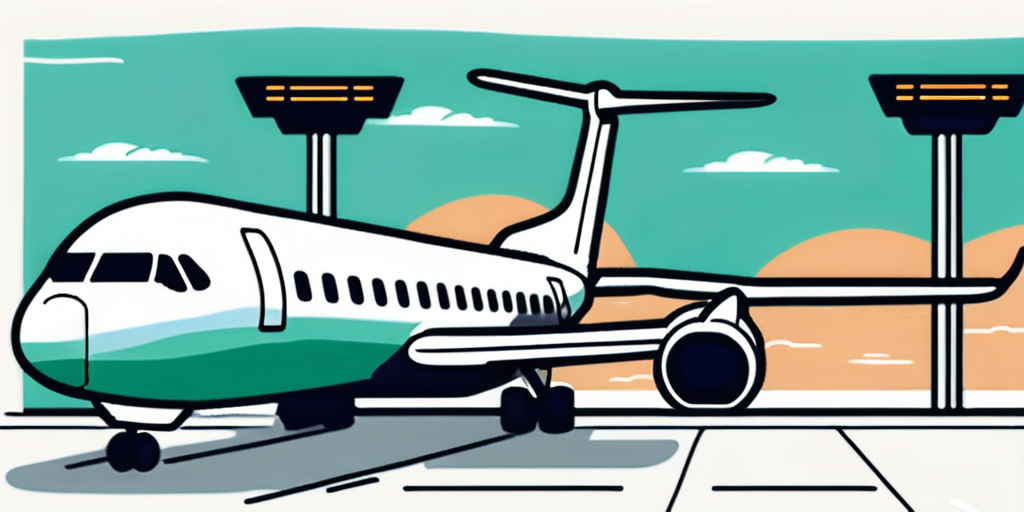Layover vs Connecting Flight: Understanding the Difference
Confused about layovers and connecting flights? Our guide clarifies the differences to help you understand and plan your journey effectively
When it comes to air travel, there are different types of flight experiences that passengers might encounter. One common confusion among travelers is understanding the difference between a layover and a connecting flight. While both involve a stop between flights, there are important distinctions that can impact your travel experience. In this article, we will define layovers and connecting flights, highlight their key differences, weigh their pros and cons, and offer tips for making the right choice. By the end, you'll have a clearer understanding of which option is best suited for your travel needs.
Defining Layover and Connecting Flight
What is a Layover?
A layover refers to a scheduled stop between flights during which passengers remain on the same aircraft or transfer to a new one. Layovers can vary in duration and are typically shorter than connecting flights. They are part of the flight's pre-planned route and are included in the ticket price. However, passengers usually cannot leave the airport during a layover.
During a layover, passengers have the opportunity to stretch their legs, use the restroom, or grab a quick bite to eat at the airport's various dining options. Some airports even offer amenities such as lounges, shopping centers, and entertainment areas to make the layover experience more enjoyable. Passengers can take advantage of these facilities to relax and recharge before continuing their journey.
What is a Connecting Flight?
In contrast, a connecting flight involves changing aircraft at an intermediate airport to reach the final destination. Passengers may need to switch terminals, go through security checks, and collect their baggage before boarding the next flight. Connecting flights are typically longer in duration than layovers and require a separate ticket for each leg of the journey.
Connecting flights offer passengers the opportunity to explore and experience multiple destinations within a single trip. For example, if you have a connecting flight in a city known for its cultural landmarks, you may choose to extend your layover and explore the city for a few hours or even a day. This allows you to make the most of your travel experience by adding an extra stop to your itinerary.
It's important to note that while layovers and connecting flights serve different purposes, both can be seen as opportunities for adventure and exploration. Whether you choose to relax and unwind during a layover or venture out and discover new places during a connecting flight, these moments in between journeys can add an extra layer of excitement to your travel experience.
Key Differences Between Layover and Connecting Flight
Duration of Wait
One of the main differences between layovers and connecting flights is the duration of the wait. Layovers are generally shorter, ranging from a few minutes to a few hours, while connecting flights can be several hours or even overnight. The length of the wait largely depends on the airline, flight route, and available connections.
 During a layover, you may find yourself with just enough time to stretch your legs, browse duty-free shops, or indulge in a quick meal. It can be an opportunity to explore the airport and get a taste of the local culture through its diverse offerings. However, with a connecting flight, the wait can be more substantial, giving you the chance to venture beyond the airport and explore the city or town where you have your layover. Imagine strolling through the streets of a foreign city, savoring local delicacies, and immersing yourself in a new environment before continuing your journey.
During a layover, you may find yourself with just enough time to stretch your legs, browse duty-free shops, or indulge in a quick meal. It can be an opportunity to explore the airport and get a taste of the local culture through its diverse offerings. However, with a connecting flight, the wait can be more substantial, giving you the chance to venture beyond the airport and explore the city or town where you have your layover. Imagine strolling through the streets of a foreign city, savoring local delicacies, and immersing yourself in a new environment before continuing your journey.
Impact on Travel Itinerary
A layover typically has minimal impact on your travel itinerary. It serves as a brief break between flights and allows you to catch your breath, grab a snack, or use airport facilities. On the other hand, connecting flights may significantly extend your travel time, especially if the layover duration is long. This can result in a more tiring and time-consuming journey.
However, connecting flights also offer the possibility of turning your layover into a mini-vacation. If you have a long layover in a fascinating city, you can plan ahead and make the most of your time there. Visit iconic landmarks, explore local attractions, or immerse yourself in the vibrant culture of the city. It's like having a bonus destination added to your travel itinerary, allowing you to create unforgettable memories along the way.
Cost Implications
Another crucial aspect to consider when choosing between a layover and a connecting flight is the cost implications. Layovers are often included in the ticket price, so there is no additional charge. However, connecting flights require separate tickets for each leg, potentially leading to higher costs. It's essential to factor in these expenses when comparing the options and determine which is more budget-friendly for your trip.
Moreover, connecting flights can provide an opportunity to explore a new destination without the need for an additional vacation. Instead of spending money on a separate trip, you can use your layover to experience a different city or country, even if it's just for a few hours. This can be a cost-effective way to satisfy your wanderlust and make the most of your travel experience.
Pros and Cons of Layovers and Connecting Flights
Advantages of Layovers
One advantage of layovers is that they offer a chance to explore a new city briefly. If the layover is several hours long, passengers may choose to venture out of the airport and engage in a mini-sightseeing adventure. Imagine strolling through the vibrant streets of Amsterdam, tasting delicious local cuisine, or marveling at the architectural wonders of Singapore. These layovers can turn a mundane journey into an exciting and memorable experience.
 Additionally, layovers provide an opportunity to rest and freshen up before continuing the journey. After a long flight, there's nothing quite like a refreshing shower and a change of clothes to rejuvenate your body and mind. Some airports even offer luxurious lounges where you can unwind with spa treatments, enjoy gourmet meals, or catch up on work in a quiet and comfortable environment.
Additionally, layovers provide an opportunity to rest and freshen up before continuing the journey. After a long flight, there's nothing quite like a refreshing shower and a change of clothes to rejuvenate your body and mind. Some airports even offer luxurious lounges where you can unwind with spa treatments, enjoy gourmet meals, or catch up on work in a quiet and comfortable environment.
Disadvantages of Layovers
While layovers can be exciting, they also have some downsides. If the layover is too short, passengers might feel rushed and worried about missing their next flight. The stress of navigating through a busy airport, going through security checks, and locating the correct gate can be overwhelming, leaving little time to truly enjoy the layover experience.
Furthermore, layovers might include longer security procedures, especially for international travelers, leading to potential delays and added stress. However, it's important to note that airports around the world are constantly improving their security measures to ensure the safety of passengers, so these delays are often a necessary inconvenience.
Advantages of Connecting Flights
Connecting flights offer the advantage of a more direct route to your final destination. They often reduce overall travel time, especially if you're flying to a smaller airport or a remote location. Imagine flying from New York to the breathtaking islands of Fiji. A connecting flight can take you from the bustling city to the paradise-like beaches in a shorter time, allowing you to start your vacation sooner.
Connecting flights can also provide opportunities to accumulate airline miles, which can be beneficial for frequent flyers. By choosing connecting flights, you can earn more miles, which can eventually lead to free flights, upgrades, or other travel perks. It's like a rewarding game where every leg of your journey brings you closer to unlocking exciting benefits.
Disadvantages of Connecting Flights
On the other hand, connecting flights come with their own set of drawbacks. The extended wait times during layovers can be tiresome, especially for long-haul journeys. However, airports have recognized this and are continuously improving their facilities to cater to the needs of travelers. Many airports now offer comfortable seating areas, entertainment options, and even sleep pods where you can catch up on some much-needed rest.
There is also a higher risk of flight delays or cancellations, as any disruption to one leg of the journey can affect subsequent flights. However, airlines have implemented various measures to minimize these risks, such as providing alternative flights or compensation for inconveniences caused by delays or cancellations. It's always a good idea to stay informed and be prepared for any unforeseen circumstances that may arise during your journey.
Lastly, the expense of purchasing multiple tickets for each flight can add up, impacting your travel budget. However, with careful planning and research, you can often find cost-effective options that allow you to enjoy the benefits of connecting flights without breaking the bank. Many airlines offer discounted fares or special promotions for travelers who are willing to take advantage of connecting flights.
Making the Right Choice: Layover or Connecting Flight
Factors to Consider
When deciding between a layover and a connecting flight, several factors should be taken into account. Firstly, consider how long you are willing to wait between flights. If you prefer shorter breaks and a more straightforward travel experience, a layover might be the better choice. On the other hand, if reaching your destination quickly is a priority or if you have specific time constraints, a connecting flight may be more suitable.
 Additionally, think about whether you have any specific requirements during the travel process. If you need extra time for rest or sightseeing, a longer layover could be advantageous. However, if you have a tight schedule or tight connections, opting for a connecting flight with minimal layover time is recommended.
Additionally, think about whether you have any specific requirements during the travel process. If you need extra time for rest or sightseeing, a longer layover could be advantageous. However, if you have a tight schedule or tight connections, opting for a connecting flight with minimal layover time is recommended.
Tips for a Smooth Travel Experience
No matter which option you choose, there are several tips to ensure a smooth travel experience. Firstly, check the airport layout and terminal information in advance to familiarize yourself with the facilities and their locations. This will help you navigate between gates and minimize potential stress during the transition.
Furthermore, make sure to allow sufficient time between flights, especially for connecting flights. Consider any passport control, security checks, and immigration procedures that might be necessary during the layover. Always factor in potential delays to avoid rushing or missing your next flight.
In conclusion, understanding the difference between a layover and a connecting flight is crucial for a successful travel experience. While layovers offer a brief break between flights, connecting flights involve changing planes at an intermediate airport. The decision between the two depends on factors such as wait time, impact on the itinerary, and cost implications. By considering these factors and following the provided tips, you'll be able to make an informed choice and enjoy a stress-free journey.
Get the Compensation You Deserve with ClaimCompass
Whether you're facing a layover or navigating a connecting flight, unexpected delays and cancellations can disrupt your travel plans. If you've experienced such inconveniences on your journey within Europe, ClaimCompass is here to help. We specialize in securing up to 600€ in compensation for air passengers affected by flight disruptions. Our hassle-free process starts with our compensation calculator to check your eligibility and potential claim amount. With no upfront fees and a 'no win, no fee' policy, you can rest assured that we will advocate for your rights and handle all the legwork. Don't let airline issues set you back—submit a claim today and let ClaimCompass fight for the compensation you're entitled to.
